CIETAC Hong Kong has published its latest caseload on statistics on arbitration duration, cost and arbitrators. A timely review in light of the latest amendment to the CIETAC Arbitration Rules which came into effect on 1 January 2024.
Highlights
Compared to the last reporting period, key statistics on CIETAC Hong Kong administered arbitrations across 2015 to 2023 show:-
- a decrease from 9 months to 7.5 months in the median duration of arbitrations;
- no time extensions granted in about 40% of cases;
- a significant 70% increase from around HK$19.9 million to HK$33.8 million in the average amount in dispute;
- a 16% decrease in the average cost of a 3-member tribunal from HK$733,259 to HK$616,206;
- over a quarter of cases involved female arbitrators;
- an international outlook with participants from 18 countries and regions, Hong Kong and China Mainland parties at the top, each accounting for about one-third of the total.
Looking ahead, CIETAC Hong Kong continues to be attractive to international parties with arbitrations applying a wide range of governing laws, it is particularly well-placed in handling cross-border disputes involving Hong Kong and China Mainland parties.
Introduction
Since 1 January 2015, CIETAC Hong Kong has offered parties the opportunity for Hong Kong seated arbitrations, within the framework of Hong Kong’s Arbitration Ordinance (Cap. 609), to be administered under the CIETAC Arbitration Rules. Marking the first 5 years of this arrangement, in 2020, CIETAC Hong Kong published “A Collection of Statistics on Duration, Costs and Arbitrators” for years 2015 to 2019.[1] CIETAC Hong Kong has now published an update to highlight recent developments in practice and its caseload between 1 January 2015 and 31 July 2023.[2] The 2020 Report and 2024 Report both concern cases administered under CIETAC Arbitration Rules 2015. Key trends as reported by CIETAC Hong Kong are summarised below:
Duration of arbitration
The 2020 Report and 2024 Report term “duration” as the time period running from the date of Notice of Arbitration to the date of the Final Award / Decision on Dismissal (excluding any period of suspension of arbitral proceedings[3]).[4]
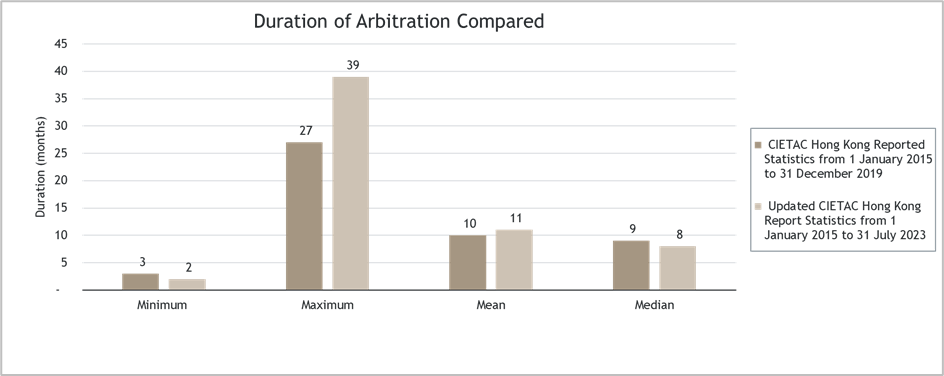
Diagram 1: Duration of Arbitration Compared in the 2020 Report and 2024 Report[5]
The CIETAC Arbitration Rules 2015 (“CIETAC Rules 2015”) provide that an arbitral award shall be rendered within 6 months from the date on which the arbitral tribunal is formed for general procedure, and within 3 months for summary procedure.[6] Under the CIETAC Rules 2015, the President of the CIETAC Arbitration Court[7] may approve requests for time extensions upon the request of the arbitral tribunal for both general and summary procedures if such requests are justified and necessary.[8]
Diagram 1 shows a comparison of the overall duration (including both general and summary procedures), between the 2020 Report and 2024 Report. Comparing the position, the median duration of arbitration fell from 9 months in the period 2015 to 2019 to 7.5 months in 2015 to 2023, despite a rise in both the maximum and average durations of arbitration.[9] The 2024 Report credits this reduced arbitration duration to efforts undertaken by CIETAC to improve the efficiency of arbitration processes in Hong Kong. The trend points to a shorter median duration with CIETAC Hong Kong users benefitting from a quicker dispute resolution process.
According to the 2024 Report, around 60% of CIETAC Hong Kong arbitration cases were granted extension request(s) between 2015 and 2023.[10] This is a reduction compared to cases between 2015 and 2019, where 69% of cases were granted extension request(s).[11]
Diagram 2 gives a percentage breakdown of the duration of extensions granted between 2015 and 2023. This highlights that granted extensions tend to be for a relatively short period, most being required for less than 6 months.
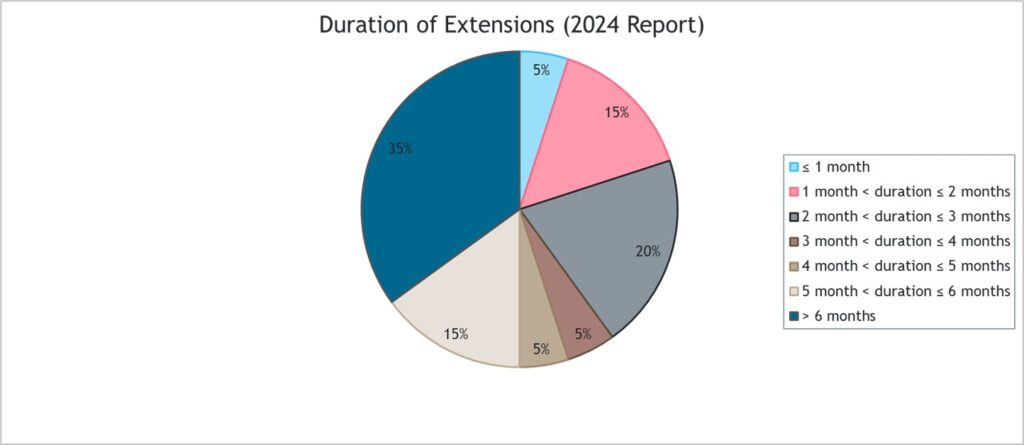
Diagram 2: Pie Chart on Duration of Extensions based on the 2024 Report
Amount in dispute
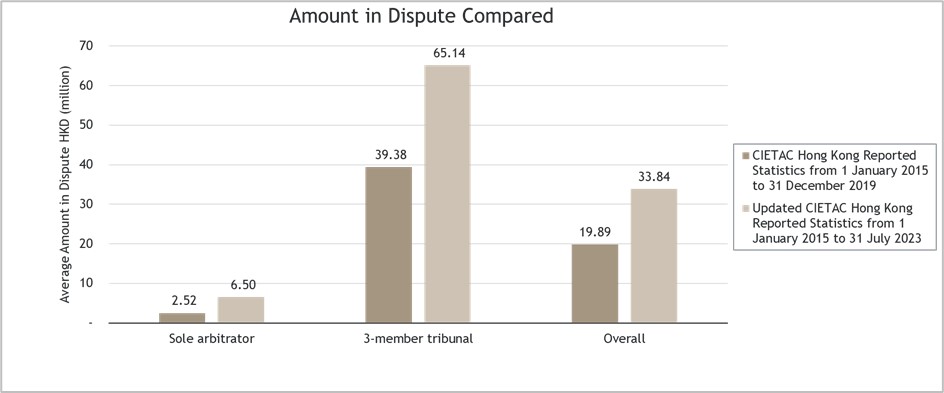
Diagram 3: Amount in Dispute in the 2020 Report and 2024 Report[12]
The average disputed sum of CIETAC Hong Kong administered arbitrations rose significantly after 2019, both for sole-arbitrator tribunals and 3-member tribunals. Overall, the average disputed sum shows a rise of about 70% from HK$19,882,746 in the 2020 Report to HK$33,837,004.62 in the 2024 Report.[13]
The cost of a CIETAC Hong Kong arbitration case varies. The average charge for a sole-arbitrator tribunal rose from HK$69,608 (in 2015 to 2019) to HK$89,803.28 (in 2015 to 2023), a rise of about 29%. However, the average charge reported for 3-member tribunals fell by about 16% from HK$733,259 (in 2015 to 2019) to HK$616,205.98 (in 2015 to 2023).[14]For practitioners, CIETAC Hong Kong statistics demonstrate a trend for higher value disputes with a reduction in the average CIETAC costs to administer such arbitrations.
Timeframe for Tribunal composition
The time needed for the composition of the tribunal is defined in the 2020 Report and 2024 Report as the period between the date of Notice of Arbitration and date of Notice of Formation of the Arbitral Tribunal.[15] Diagram 4 shows a comparison of this period (overall duration including both general and summary procedures), as seen in the 2020 Report and 2024 Report.
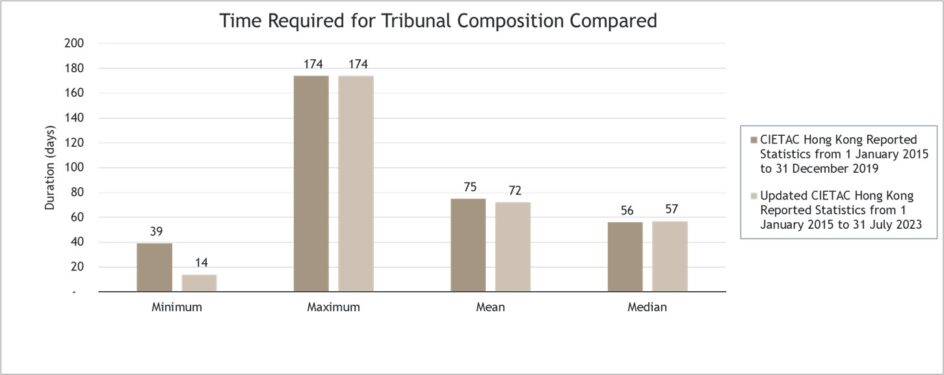
Diagram 4: Time Required for Tribunal Composition Compared in the 2020 Report and 2024 Report[16]
Despite a minimal increase in the time needed for tribunal constitution (the median duration of tribunal composition rising from 56 days in 2015 to 2019 to 57 days in 2015 to 2023), the average duration for tribunal composition decreased from 75 days (in 2015 to 2019) to 71.52 days (in 2015 to 2023), with the minimum time needed falling by more than half (from 39 days in 2015 to 2019 to 14 days in 2015 to 2023).[17]
The 2024 Report further states that on average it took around 5.06 days to form an arbitral tribunal upon receipt of advance payment for the arbitrator’s fees and expenses for summary procedure cases, and 2.47 days for general procedure cases.[18]
Emergency arbitrator
The 2024 Report includes a new section on emergency relief,[19] namely Emergency Arbitrator Procedures under the CIETAC Rules 2015.[20] The 2024 Report tabled two cases in 2021 as examples of CIETAC Hong Kong’s administering of the Emergency Arbitrator Procedures. Notably, in both cases the decision of the emergency arbitrator was issued within 15 days,[21] with CIETAC Hong Kong appointing an emergency arbitrator within 23 hours.[22] The application for Emergency Arbitrator Procedures was submitted before the commencement of the arbitral proceedings in one case, and after the commencement of the arbitral proceedings in the other case.
Gender diversity
From 2015 to 2023, over a quarter of cases at CIETAC Hong Kong involved female arbitrators. Across the arbitral tribunals, around one-fifth of them were either chaired by female arbitrators or heard by a sole female arbitrator.[23] CIETAC Hong Kong’s focus on female arbitrators aligns with the international trend towards enhancing gender diversity in arbitration.[24] CIETAC Hong Kong’s proportion of female arbitrators is also similar to that of CIETAC’s broader statistics, where around 26% of arbitrator appointment and nominations were made to female arbitrators.[25] CIETAC Hong Kong is also a signatory of the Equal Representation in Arbitration Pledge,[26] demonstrating a commitment towards ensuring fair representation of women in arbitration.
International outlook
Parties. Between 2015 to 2023, participants in arbitrations administered by CIETAC Hong Kong came from 18 countries and regions. Hong Kong and China Mainland parties were the top geographical origins or nationalities, each accounting for about one-third of the total.
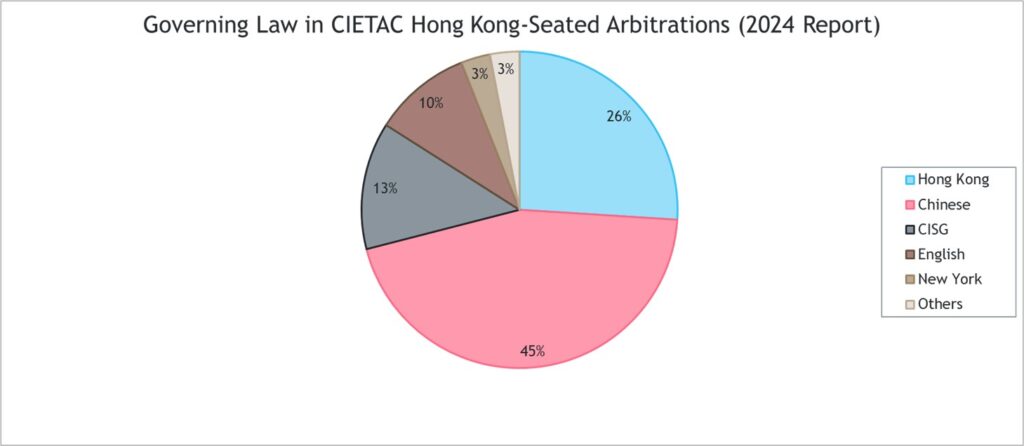
Diagram 5: Pie Chart showing the Governing Law in CIETAC Hong Kong-Seated Arbitrations based on the 2024 Report
Governing law. A wide range of governing laws were applied. Between 2015 to 2023, Chinese law was the most commonly selected governing law (45%), with Hong Kong law (26%), United Nations Convention on Contracts for the International Sale of Goods (CISG) (13%), English law (10%), and New York law (3%) among other governing laws selected.
Language. Around half of the arbitrations at CIETAC Hong Kong were administered in Chinese (52%), compared with 42% in English, and 6% in both English and Chinese.
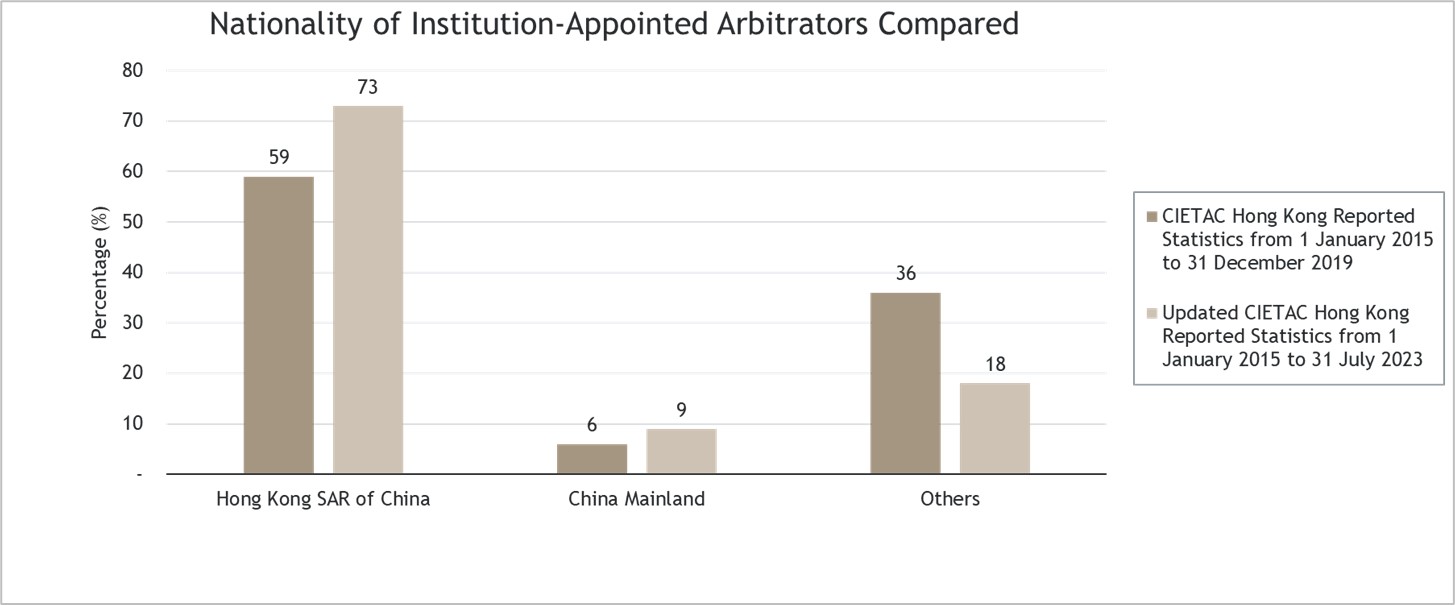
Diagram 6: Pie Chart showing the Institution-Appointed Arbitrators Compared in the 2020 Report and 2024 Report
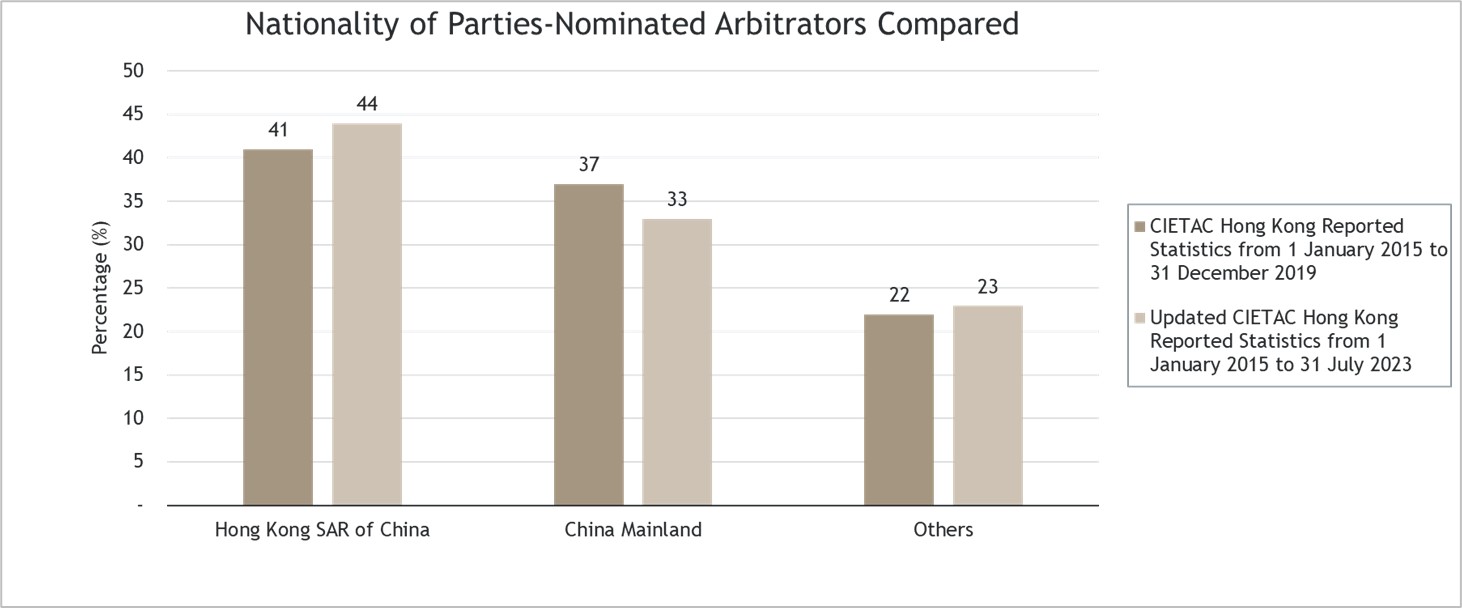
Diagram 7: Pie Chart showing the Parties-Nominated Arbitrators Compared in the 2020 Report and 2024 Report
Arbitrators. The percentage of institution-appointed Hong Kong arbitrators rose significantly from 59% (in 2015 to 2019) to about 73% (in 2015 to 2023); and more moderately with a slight rise in the parties’ nomination of Hong Kong arbitrators from 41% (in 2015 to 2019) to about 44% (in 2015 to 2023).[27] The increase may reflect CIETAC Hong Kong’s established presence in Hong Kong and greater degree of familiarity with Hong Kong arbitrators.
Cross-border disputes. The above data reflects the geographical proximity and close relationship between Hong Kong and China Mainland, which gives Hong Kong a unique advantage in handling China-related disputes. CIETAC Hong Kong offers further support for China-related arbitrations by being a qualified institution under the Hong Kong-Mainland China Arrangement on Interim Measures.[28]
Conclusion
Established in 2012, as the first CIETAC branch outside China Mainland,[29] CIETAC Hong Kong now stands as one of three CIETAC branches outside China Mainland. The recently released 2024 Report provides further insight about CIETAC Hong Kong’s administration work. The ongoing trend for arbitral institutions, including CIETAC Hong Kong, to release statistics and trends is to be encouraged in providing practitioners with a deeper understanding of the respective centre and application of its rules.
Noted, the latest version of the CIETAC Arbitration Rules came into effect on 1 January 2024 (“CIETAC Rules 2024”). These new rules include measures aimed at reducing the duration of arbitration, such as allowing parties to apply for early dismissal,[30] and prioritising electronic service of arbitration documents.[31]
The CIETAC Rules 2024 intend to enhance the CIETAC process with added flexibility, autonomy, and efficiency for the parties while reflecting international standards and expectations. These new rules support the positive trends towards more efficient arbitration set out by CIETAC Hong Kong in the 2024 Report[32].
With comprehensive experience of the arbitration framework in Hong Kong, China Mainland, and overseas, the King & Wood Mallesons team stands ready to address any queries that you may have on the new CIETAC Rules 2024 and support your arbitration needs.
[1] “A Collection of Data on Period, Payment and People from CIETAC Hong Kong Arbitration Center-administered (under CIETAC Arbitration Rules 2015) Hong Kong-seated cases during 2015 to 2019” (“2020 Report”).
[2] “A Collection of Statistics on Duration, Cost, Arbitrator and Emergency Arbitrator on cases concluded between 1 January 2015 and 31 July 2023 (under CIETAC Arbitration Rules 2015)” (“2024 Report”).
[3] Article 45, CIETAC Rules 2015. There is also an equivalent provision under Article 45, CIETAC Rules 2024.
[4] 2020 Report “How long is it from the commencement to the final result?”; 2024 Report “How long to obtain a final result?”.
[5] Figures have been rounded up to the next whole number.
[6] Articles 48 and 62, CIETAC Rules 2015.
[7] Article 48(2), CIETAC Rules 2015; Article 62(2), CIETAC Rules 2015.
[8] Article 48(2), CIETAC Rules 2015; Article 62(2), CIETAC Rules 2015. Note that there are also equivalent provisions under the CIETAC Rules 2024, namely Article 51(2) and Article 65(2).
[9] 2024 Report “How long to obtain a final result?”; 2020 Report “How long is it from the commencement to the final result?”.
[10] 2024 Report “How long to obtain a final result?”.
[11] 2020 Report “Approving of extension to draft arbitral awards beyond its time limit – how often does it happen?”.
[12] Figures are based on the mean figures stated the 2020 Report and 2024 Report, rounded up to the next 2 decimal places.
[13] 2020 Report “How much do you pay for an arbitration commenced at CIETAC Hong Kong Arbitration Center?”; 2024 Report “How much fee CIETAC Hong Kong charges?”.
[14] 2020 Report “How much do you pay for an arbitration commenced at CIETAC Hong Kong Arbitration Center?”; 2024 Report “How much fee CIETAC Hong Kong charges?”.
[15] 2020 Report “How long does it take to form the arbitral tribunal?”; 2024 Report “How long to form an arbitral tribunal?”.
[16] Figures have been rounded up to the next whole number.
[17] 2020 Report “How long does it take to form the arbitral tribunal?”; 2024 Report “How long to form an arbitral tribunal?”.
[18] 2024 Report “How long to form an arbitral tribunal?”.
[19] 2024 Report “How can one apply for emergency relief?”.
[20] Appendix III, CIETAC Rules 2015. There are also equivalent provisions in Appendix III of the CIETAC Rules 2024.
[21] Also required by Article 6(2) of Appendix III, CIETAC Rules 2015. The equivalent provision is at Article 6(2) of Appendix III in the CIETAC Rules 2024.
[22] Article 2(1) of Appendix III, CIETAC Rules 2015, provides for appointment within 1 day from receipt of both the application and advance payment of costs of the Emergency Arbitrator Procedures. The equivalent provision is at Article 2(1) of Appendix III in the CIETAC Rules 2024.
[23] 2024 Report “How active were female arbitrators in CIETAC Hong Kong cases?”.
[24] International Council for Commercial Arbitration, Report of the Cross-Institutional Task Force on Gender Diversity in Arbitral Appointments and Proceedings (2022 Update), https://cdn.arbitration-icca.org/s3fs-public/document/media_document/ICCA-Reports-no-8-Gender-Diversity-2022-update.pdf.
[25] China International Economic and Trade Arbitration Commission, CIETAC 2023 Work Report and 2024 Work Plan, www.cietac.org/index.php?m=Article&a=show&id=20112&l=en.
[26] Equal Representation in Arbitration, Organisations, https://www.arbitrationpledge.com/organisations.
[27] 2020 Report “Arbitrators – where are they from?”: Hong Kong arbitrators are persons holding Hong Kong-issued passport / permanent resident ID card to be Hong Kong arbitrators; 2024 Report “Where were the arbitrators from?”: Hong Kong arbitrators are persons having a right of abode in Hong Kong; Immigration Department, Eligibility for the Right of Abode in the HKSAR, https://www.immd.gov.hk/eng/services/roa/eligible.html.
[28] Department of Justice, Contact Details of Institutions and Permanent Offices Which Are Qualified under Article 2(1) of the Arrangement (as at 18 March 2024), https://www.doj.gov.hk/en/community_engagement/announcements/pdf/Interim_Measures_Arrangement_Contact_Details_of_Arbitral_Institutions_en.pdf.
[29] These overseas arbitration centres complement the work of CIETAC, with its headquarters in Beijing and 13 CIETAC sub-commissions located across China Mainland.
[30] Article 50(1), CIETAC Rules 2024.
[31] Article 8(2), CIETAC Rules 2024.
[32] The authors would like to thank Joanna Keung for her invaluable assistance in the preparation of this article.








